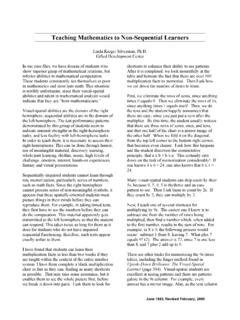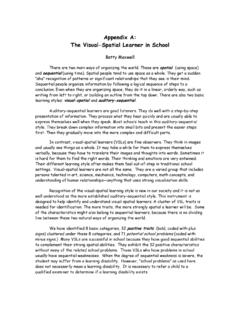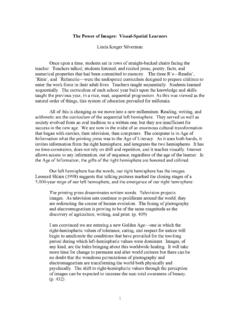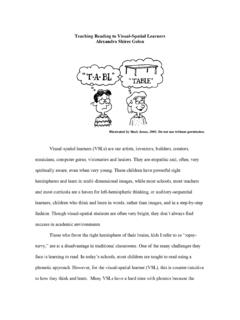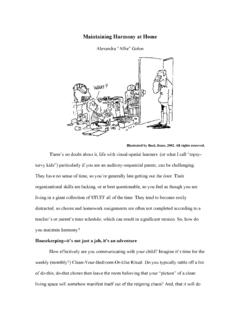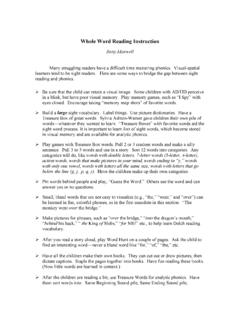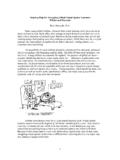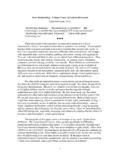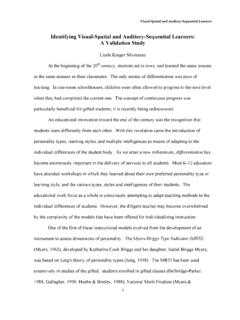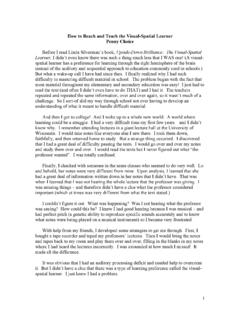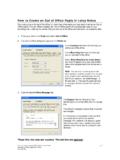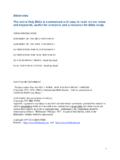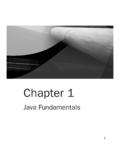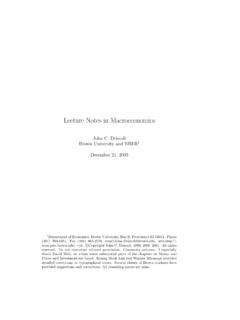Transcription of Taking Notes in Picture Form – A Powerful Strategy for ...
1 Taking Notes in Picture form A Powerful Strategy for visual - spatial Students Alexandra Shires Golon Director, visual - spatial Resource Who are visual - spatial learners? visual - spatial learners, or VSLs, are those among us with Powerful gifts of the right hemisphere. They are our artists, inventors, builders, creators, musicians, computer gurus, visionaries and healers. They are empathic and often very spiritually aware, even when they are very young. They think and learn in multi-dimensional images. However, most schools, most teachers and most curricula are a haven for left-hemispheric thinking, or auditory-sequential learners; children who think and learn in words, rather than images, and in a step-by-step fashion.
2 Those who favor their right hemisphere (at least one-third of the student body) face several disadvantages in the regular classroom. One of these challenges is the ability to take effective Notes . This makes sense when you think about it, though. In delivering strictly auditory lectures, we are asking those who think in images to translate their mental pictures into words, write those words quickly, yet comprehensively, and then go back to those words and create permanent mental images that they can regurgitate on demand. But, for visual - spatial students, there is a better way!
3 My son, Matt, was once a homeschooler Taking an outside World History class and one day, there was a guest teacher who had been in World War II. As the gentleman was giving his lecture (an oral presentation only, with no maps, pictures or other images), he stood over Matt and noticed that Matt was drawing ( doodling ) in his notebook. He held the notebook up for the entire class to see and said, I hope the rest of you are paying more attention than this young man. Matt was horrified that the teacher believed him to have been just doodling.
4 After class, he approached the guest teacher and 1explained that his drawings were how he took Notes . He asked the gentleman to quiz him on any of the material. The teacher did and Matt answered all the questions correctly. Matt had decorated the outlines of countries with the dates the man was there. He had drawn the weapons the veteran had used from the descriptions given. As a Picture -thinker, Matt was able to accurately recall the material because he had created pictures of the details, both in his notebook and in his mind. He drew them, so he owned them.
5 They were permanent images that were easily recalled. The teacher apologized to the class the next day, saying, I didn t realize you could take Notes in pictures . Your visual - spatial children can use this technique, of Taking Notes in Picture form , while they are listening to a lecture or if they need Notes on what they are researching from a book, a TV show or the Internet. Whatever source they are using to learn new material from, that material can be remembered more easily by drawing pictures . Drawing helps new material become permanent in their minds because they can download those pictures , mentally, whenever they need them.
6 If your children have a hard time staying awake during lectures that don t have visuals, they must understand that they are responsible for keeping the right hemispheres of their brains awake! I encourage students to do whatever it takes to keep that part of their brain in the game. Taking Notes in pictures is often a good first step. They can make the pictures silly, funny, even cartoon-like. They don t have to be phenomenal artists. This is only a technique to aid in remembering what they are hearing. Show them how to listen for important details like dates, names and places and to include those in their drawings.
7 They can use names and dates to decorate their drawings as in this example Matt drew for me about what he had listened to about Christopher Columbus voyage: 2 Notice that his drawing includes the names of the ships, the year they sailed, where they sailed from and where they thought they had landed (India). Students can take Notes in Picture format for nearly any subject. Even stick figures or quick strokes of a pen or pencil will work this is note Taking , not fine art! If your children find they can t draw fast enough while in class, they could ask the teacher if they may be allowed to tape record the lecture.
8 That way, they can do their drawings later, when they can replay the tape and stop it as needed. If Taking Notes in pictures is too time consuming and the teacher will not allow your children to record the lectures, they can try a modified version of Picture -note Taking by doing a mix of drawing and words. When I was in high school, I had a teacher who lectured to us at lightning speed. We were expected to write down every word he said. We never knew what tiny 3detail would be on a pop quiz and we never knew when the quiz would be given.
9 I taught myself to use symbols in place of words. For example, the symbol means change. The symbol < means less than, and > means more than. This symbol @ means at but is even quicker to write. The Greek Letter Sigma, shown as , means sum. These are commonly used symbols, but your children can make up their own. I used to mean something was increasing or growing, and to mean something was being taken away or becoming smaller. I used to write about two columns of things that were equal or characters of a story who had the same traits, or anything else that I needed to know were related somehow (you could also use the = sign!)
10 This symbol, , is Omega, the last letter in the Greek alphabet. I used it whenever something was ending or if a character died. A capital A is the Greek symbol for Alpha, or the beginning, and could be used to write about the start of something new or a birth or the introduction of a new character. You could use B4 for the word, before, or oppty for opportunity. If given the opportunity, I ll bet your kids can think of lots of abbreviations and then start using them in their note Taking . There are plenty of acronyms in use today.
